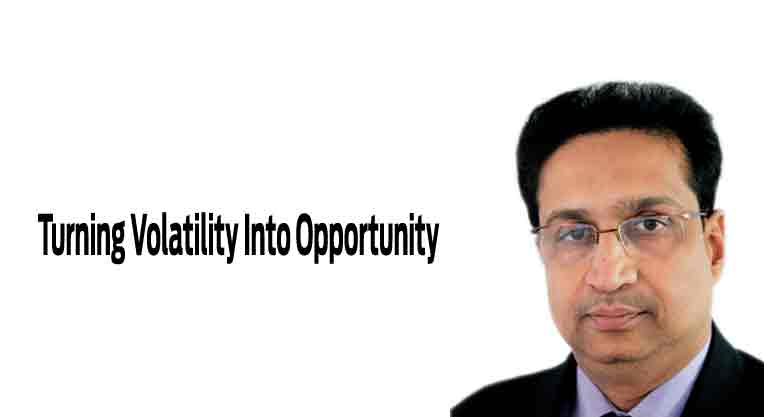Equity market went down last month owing to many factors. It is important to keep adjusting your asset allocation, which investors need to navigate judiciously. The stock market movement so far this year is a testament to its whimsical nature. From April 2018 to September 2018, it witnessed a stellar rally with key benchmark indices scaling life-time highs. Subsequently, markets peaked in September and have corrected by more than 10 per cent since then. Stocks that are insulated from the GST and demonetisation shocks have performed well and will continue to stay insulated from extreme volatility. Additionally, as we approach November-December, markets will start discounting March 2019 numbers. From that perspective, markets are not very expensive and will provide opportunities for astute investors.
The investment climate has been peppered with volatility. Headwinds in the form of rising crude oil prices, a depreciating rupee, higher interest rates and abating foreign institutional investor participation have had a negative impact on investor sentiment and are likely to limit any market gains in the near term. Additionally, uncertainty related to the 2019 general elections will act as a dampener to market gains. We expect volatility to persist over the next six to nine months and believe that a plain vanilla investment strategy might not be the best strategy as the broader market is not likely to move up in a hurry.
An investment vehicle that is fast gaining currency in India is Alternative Investment Funds (AIFs). They basically invest in assets that do not fall under the traditional categories of stocks, bonds or cash and can use strategies that go beyond traditional ways of investing. Myriad strategies have been adopted by such funds that are more nuanced, allowing a greater degree of specialisation and can capitalise upon intermittent opportunities. AIFs have the flexibility to invest in the markets in a phased manner as a result of which fund managers are able to capture better opportunities. Many AIFs have adopted absolute return strategies that are not highly correlated with the market and are thus able to deliver superior risk-adjusted returns.
We expect the weakness in the Indian Rupee to persist driven by elevated crude oil prices and continued global trade war tensions. In such a scenario, ultra high net worth investors should consider spreading their currency risk by opting to invest through the Liberalise Remittance Scheme (LRS). Under the LRS, all resident individuals, including minors, are allowed to freely remit up to $250,000 per financial year for any permissible current or capital account transaction or a combination of both. The LRS scheme enables resident individuals to access global markets and diversify their portfolios by taking exposure to different asset classes. Under the LRS scheme, investors can invest in offshore funds with the underlying ranging from equities to fixed income to REITs.
We are now entering a hardening interest rate regime. As inflation continues (post oil price rise) to be a concern for RBI, eventually, we believe that another rate hike is on the horizon. Fixed maturity plans are a good investment option in the current scenario as yields on bonds have moved up significantly. We expect yields to stay firm and possibly get better in the near term as a result of the crowding out effect of increased government borrowing. Investors can also consider investing in structured products with an investment horizon of 13 to 24 months. Better to space out your debt investment from now till end of the year to average out in this rising rate scenario.
Investors wanting to invest in equities can look at large caps over mid and small caps. We continue to be constructive on the equity market over the long-term, though we remain cautious over the short-term. Our recommendation is to have a staggered approach in terms of incremental deployment with a focus on instruments with underlying large cap allocation. Ideally, portfolios should have a healthy mix of well diversified AIFs or mutual funds and niche benchmark agnostic equity strategies.
In any investment climate, investors have the option to choose from a plethora of products that can best capitalise on opportunities and meet their risk-return objectives. However, investors should be well informed and take investment decisions judiciously.
The author is Executive Director, IIFL Investment Managers.

